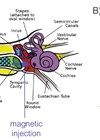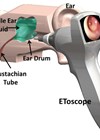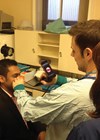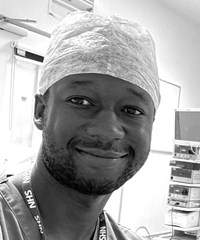ENT features
Developing a telemedical approach to tinnitus treatment for a worldwide market
Most of us have probably met at least one person in our lives who suffers from the notorious ringing in the ear, tinnitus. For many this ringing becomes a nightmare and debilitates them. Tinnitus is defined as the perception of...
Job Ahead: understanding the business and financial aspects of US practice
Dr Christiansen brings over 30 years of experience as a practising otolaryngologist both in private practice and in academic medicine as Associate Professor of Clinical Otolaryngology at the University of Missouri School of Medicine. Dr Christiansen started his career in...
Establishing a medical device company: an ENTrepreneur’s experience
In 2004, while I was suturing the mucopericondrial flaps for a septoplasty, I thought to myself, “there must be an easier and faster way of doing this”. Even though I had no formal training in business or medical device development,...
Pre-clinical development of magnetic delivery of therapy to middle and inner ears
Why are we developing this technology? A key problem in drug delivery is getting the therapy to the right place in the body, which is especially challenging for targets that are small, deep and are protected or surrounded by anatomical...
Developing medical devices for children: opportunities and challenges
The development of medical devices for infants and children lags significantly behind the development of devices for adults. While in the United States the Food and Drug Administration (FDA) has set up incentives for developing child age-specific pharmaceuticals, there is...
Developing an Innovation for ENT – from Idea to Market: how ‘e-i’ did it
Background endoscope-i (e-i) Ltd was incorporated into Companies House on December 3rd, 2012 following eight months of developing our first project, a simple iPhone adapter for endoscopes. Of the three founding shareholders, two are ENT surgeons and one a lecturer...
Funding your otolaryngology / audiology idea by partnering with the US Department of Defense
The United States Department of Defense (DoD) has been an effective partner in many of our current medical technology advancements, from the surgical robot, to improved clotting wound dressings, to better blood products. For the otolaryngology and audiology entrepreneur looking...
The big ask – maintaining the entrepreneurial spirit in academic facial plastic surgery in the USA
en·tre·pre·neur, noun a person who organises and operates a business and who has qualities of leadership, initiative and innovation. In the United States, facial plastic surgery (FPS) services are divided among private and academic practices. The vast majority of academic...
Changing behaviour with a human factors approach
The Francis Report (2013) identified multiple problems relating to the safety culture of Stafford Hospital in the period 2005 – 2009, as well as serious failings in the supervisory and regulatory systems of the NHS. Particular criticism was directed at...
Surgical technology and operating room safety failures: lessons from vascular and general surgery
Background – surgical technology and otolaryngology An estimated 234 million major surgical procedures are performed annually worldwide. This requires the interaction of multidisciplinary teams with varying contributions of surgical technology and therefore makes surgical procedures prone to multiple sources of...
Doctors’ health and wellbeing: depression in surgeons
Dr Clare Gerada and Richard Jones work for the Practitioner Health Programme (PHP), a specialist service for doctors and dentists in the London area with mental health / addiction problems (www.php.nhs.uk). Here they discuss some of their preliminary findings (specific...
The workplace environment and doctors’ health (ENT)
It is well established that doctors have higher levels of stress, depression and suicide than the general population [1] and most other professional groups (Figure 1 illustrates the factors that can make us ill). In addition they have high levels...

















